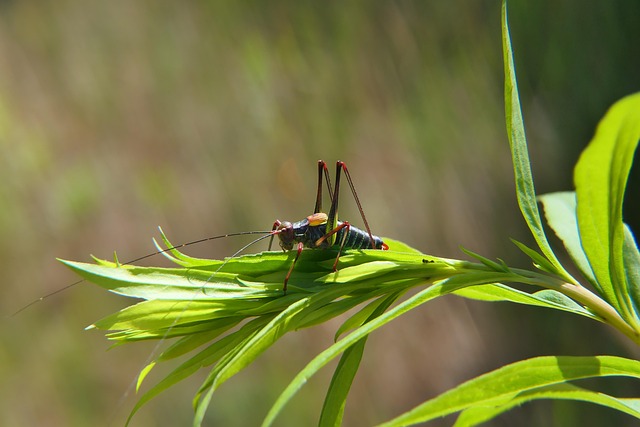Cricket infestations pose significant risks to homes and businesses, causing structural damage and unsanitary conditions. Traditional chemical treatments are harmful and ineffective. Eco-friendly cricket solutions emphasize sustainability, including introducing natural predators, modifying habitats, and using innovative technologies. Expert inspections are crucial for developing strategic interventions without environmental damage. These solutions minimize the ecological impact while effectively managing infestations through natural means, providing a humane alternative to chemicals and contributing to a greener environment.
Cricket infestations can wreak havoc on homes and properties, causing structural damage and unsanitary conditions. Understanding these hidden invaders and their impact is crucial. This article delves into the world of cricket control, highlighting traditional methods and the growing preference for eco-friendly solutions. We explore how expert inspections play a pivotal role in identifying hiding spots, enabling more effective, long-term management strategies. Discover sustainable cricket solutions that offer a gentle yet powerful approach to regaining control over your space.
Understanding Cricket Infestations and Their Impact
Cricket infestations can significantly impact homes and businesses, causing structural damage and fostering an unsanitary environment. These tiny creatures are adept at hiding in crevices and hard-to-reach areas, making them difficult to detect until their population has grown substantial. Traditional pest control methods often rely on toxic chemicals, which can be harmful to both humans and the environment. However, there’s a growing trend towards eco-friendly cricket solutions, offering safer alternatives for both people and planet.
By understanding where crickets thrive—from dark corners and damp spaces to materials like wood and fabric—experts can employ targeted, non-toxic methods to identify and eliminate hiding spots. These strategies not only mitigate the impact of infestations but also promote a healthier living and working environment, aligning with the growing demand for sustainable pest management practices.
Traditional vs Eco-Friendly Cricket Control Methods
In the age-old battle against crickets, traditional methods often involve harsh chemicals and toxic treatments, leaving a trail of potential environmental harm. These conventional cricket control strategies may offer swift results, but they fail to address the root cause and can disrupt the delicate balance of ecosystems. As such, there’s a growing shift towards eco-friendly cricket solutions that prioritize sustainability without compromising effectiveness.
Eco-friendly cricket control methods focus on non-toxic approaches, leveraging natural predators, habitat modification, and innovative technologies. For instance, introducing beneficial insects like lacewings or predator bugs can effectively reduce cricket populations. Additionally, removing potential hiding spots by maintaining neat lawns and gardens discourages crickets from seeking shelter, providing a more sustainable and environmentally conscious approach to managing these pests.
The Role of Expert Inspections in Identifying Hiding Spots
Expert inspections play a pivotal role in identifying cricket hiding spots, especially when it comes to implementing eco-friendly cricket solutions. These meticulous assessments involve highly skilled professionals who employ specialized techniques and knowledge to uncover even the most concealed habitats. By thoroughly examining structures, landscapes, and potential hiding places, experts can pinpoint areas where crickets tend to gather or establish their homes.
This process is crucial for developing effective strategies that disrupt cricket populations without causing environmental harm. Eco-friendly cricket solutions focus on safe and sustainable methods, ensuring that the natural balance remains intact while mitigating the impact of these insects. Through expert inspections, property owners, farmers, and pest control specialists can make informed decisions, leading to tailored solutions that address cricket infestations while preserving the ecosystem.
Implementing Sustainable Cricket Solutions for Long-Term Relief
Implementing sustainable cricket solutions is a game-changer for long-term relief from these persistent pests. Eco-friendly cricket control methods prioritize minimizing environmental impact while effectively managing infestations. One such approach involves the use of natural predators, such as birds and certain insects, which can help reduce cricket populations in a safe and harmonious way. These methods not only provide a humane alternative to chemical pesticides but also promote a balanced ecosystem within your surroundings.
Additionally, structural adjustments and habitat modification play a crucial role in preventing cricket hiding spots. Creating physical barriers and ensuring proper ventilation can make areas less inviting for crickets to breed and hide. Sustainable practices, combined with regular monitoring, offer a comprehensive strategy to keep crickets at bay without resorting to harsh chemicals. This not only provides relief for homeowners and businesses but also contributes to a greener, healthier environment.
Cricket infestations can significantly impact homes and businesses, but with expert inspections and a shift towards eco-friendly cricket control methods, long-term relief is achievable. By identifying hiding spots through thorough assessments, professionals can implement sustainable solutions that minimize the use of harmful chemicals. Adopting eco-friendly cricket solutions not only protects human health and the environment but also offers effective, lasting results. This comprehensive approach ensures a quieter, pest-free living or working space for all.
